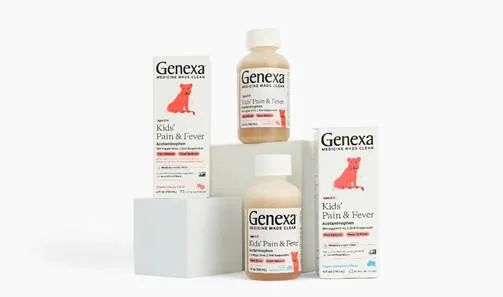The last year has been remarkable for medical advancement, and with thousands of therapies in the development pipeline, 2024 promises to be just as exciting.
New CAR-T treatments, which use the body’s immune system to kill cancer cells, now help patients fight advanced-stage leukemia, with success rates of up to 94%. Genetic treatments give vision back to people with hereditary blindness. There’s a newly approved drug that slows the course of early-stage Alzheimer’s disease.

Stephen Ubl
Not long ago, scientists might have thought that the treatments available today would be something from science fiction. But the pace of breakthroughs has surprised everyone. There has never been a more exciting time for biopharmaceutical innovation.
Unfortunately, misguided policy proposals threaten to stall our current rate of discovery at patients’ expense.
Political leaders are rightly concerned about patients’ out-of-pocket medical costs but have failed to correctly identify the root cause. Instead, they’re coming between patients and their medicines, blaming pharmaceutical companies and responding with policies that are bound to backfire.
Most recently, the FDA authorized Florida’s state importation plan. This is a reckless decision that would bring unapproved medicines in from Canada, posing a serious danger to public health.
President Biden, for his part, last year celebrated the relaunch of his Cancer Moonshot — an ambitious goal to slash the cancer death rate in half. Yet his signature piece of legislation, the Inflation Reduction Act (IRA), threatens the more than 1,300 new cancer treatments in development.
In 2023, the administration selected the first 10 drugs to be subject to price controls under the IRA, a program that will expand each year. As numerous studies have pointed out, this scheme to artificially cap drug revenues will reduce investment in biopharmaceutical research and significantly lower the number of new medicines that come to market.
A new policy brief by researchers at the University of Chicago, for instance, concluded that IRA price-cap rules will reduce spending on research and development by 12% over the next two decades, leading to 79 fewer new small-molecule drugs. This forgone innovation will result in 116 million life years lost.
Today, the pharmaceutical industry invests 10 times more on research and development per year than in the 1980s, and three times more than the total annual budget of the National Institutes of Health. The results speak for themselves: There were 60% more new drug approvals between 2010 and 2019 than in the prior decade. Our country’s robust research and development system is a direct result of laws and intellectual property (IP) protections that encourage risk-taking and incentivize investment. Yet the administration may be about to dismantle some of those very laws.
Most recently, the Biden administration announced the creation of a road map for seizing patent rights, a devastating loss for American patients and inventors. The U.S. leads the world in medicine development in part because the Bayh-Dole Act encourages the private sector to translate the inventions arising from government and academic researchers into useful commercial products. Our innovation ecosystem is the envy of the world, and allowing government bureaucrats to take away patent protections is a step back to a time when government-funded research was left on the shelf, not benefiting anyone.
Additionally, the Biden administration is considering whether to support a proposal at the World Trade Organization to waive IP rights on COVID-19 tests and treatments. Supporters of the waiver argue that it would boost access to these medicines in low-income countries. But globally, thanks to some 80 voluntary licensing agreements between drug developers and local generic manufacturers, COVID-19 therapeutics are widely available wherever there is demand.
An IP waiver would only serve to strip U.S. companies of valuable IP rights and outsource American jobs to foreign competitors. Additionally, based on the innovations behind many COVID-19 medicines, U.S. researchers are developing new treatments for cancer, autoimmune disorders and other serious conditions — research that would be in jeopardy if IP rights disappear. To help tomorrow’s patients, the Biden administration should reject the pending IP waiver.
If the administration really wants to make prescription medicines more accessible, it needs to enact reforms that tackle the underlying causes of high drug costs. It doesn’t matter how innovative a medicine is if patients can’t afford it.
Last year, net prices for brand-name drugs decreased for the fifth year in a row, falling by nearly 9% after accounting for inflation. (The net price is the revenue a manufacturer earns from a drug after providing discounts, rebates and other reductions.)
Yet if drug prices are coming down, why are patients still feeling the pinch when they fill a prescription?
The answer lies with middlemen in the drug supply chain: the pharmacy benefit managers, insurers and other entities that collectively siphon off around half of every dollar spent on brand-name prescription medicine.
Insurers use their PBMs to negotiate more than $100 billion dollars in rebates and discounts from drug manufacturers every year that can lower what they pay for medicines by 50% or more. In theory, those savings should flow directly to patients but, unfortunately, they don’t. Instead, insurers and PBMs force patients to pay based on the undiscounted price of medicines. That means patients can pay more for their medicines than their insurer and PBM did.
At the same time, PBMs control the insurance company formularies that determine which drugs a plan covers. PBMs demand rebates and fees that are calculated as a percentage of a drug’s list price — so the higher the list price, the more a PBM can make. Many experts have warned this can drive PBMs to favor drugs with higher list prices, regardless of whether a less costly alternative would have suited a patient just as well.
Many states have taken steps to crack down on PBMs through policy reforms and oversight. But action to reform the PBM system at the federal level has been lacking.
Lawmakers can champion straightforward policy reforms that would help countless patients afford the medicines they need. This begins with separating PBM compensation from the price of medicines. PBMs should receive fixed fees based on the services they offer, not based on a medicine’s list price. Additionally, they should be required to pass rebates directly to patients, ensuring patients do not pay more than their insurer. These adjustments would help fix the broken PBM incentive structure that can increase out-of-pocket costs for patients at the pharmacy.
As insurance coverage has eroded over time, biopharmaceutical manufacturers have stepped in to help provide patient assistance, such as for co-pays or other out-of-pocket costs. Unfortunately, insurers and PBMs are using schemes, such as accumulator adjustment programs (or co-pay accumulators) and co-pay maximizers, that deny patients the full benefit of this assistance that can be a lifeline. As lawmakers look to solve systemic flaws that are driving up costs for patients in the first place, it’s critical they also protect co-pay assistance to make sure it gets to patients who need it, not insurance companies and middlemen.
Last but not least, the government needs to rein in the 340B program, which was started in the 1990s with the goal of helping hospitals in poorer communities serve low-income and uninsured patients. The program lets these hospitals buy medicine from the manufacturers at major discounts. But it was implemented without oversight or any requirement that recipient hospitals use the savings to help patients. 340B has since evolved into a profitable scheme for multi-location hospitals, which take advantage of the discount, then turn around and sell the drugs at full price to insured patients.
We need reform that returns the 340B program to its original purpose, which was to help low-income patients access medicine.
We stand at a crossroads where today’s decisions will affect our ability to treat patients for decades to come. Lawmakers and the administration must unite to forge a brighter future, rather than dismantling the building blocks of America’s world-leading innovation. Without necessary reforms, the system is poised for failure.
Stephen Ubl is president and chief executive officer of Pharmaceutical Research and Manufacturers of America (PhRMA).









